M1 Garand Failure to Cycle
Failure to cycle malfunctions is the most common malfunction seen on the M1 Garand. This failure mode is also called “Short Stroking”. These problems are normally very easy to resolve. We’ll cover the most common reasons for this below.
Most of the corrective actions we’ll be taking require that the rifle be field stripped. If you haven’t done so yet follow this link and field strip your rifle now. [Field Stripping your M1 Garand]. The corrective actions we list below come from the Army’s TM9-1275 manual.
Before beginning, verify that your M1 is unloaded by pulling the op-rod handle fully back and inspecting the chamber!
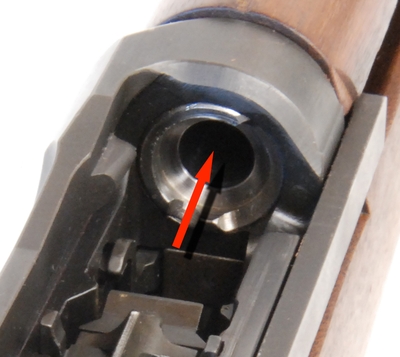
Getting Started:
Short recoil stoppages, often confused with feed stoppages, occur in rifles that are underpowered. Low gas pressure results in the operating rod not being driven completely to the rear. When a weapon is underpowered and thus subject to short recoil stoppages, it will usually close on an empty chamber or fail to eject the fired case. This is the type of malfunction that occurs most frequently in the M1 Garand.
Before beginning, verify that your gas screw is tight. It’s not uncommon for the new M1 Garand owner to not tighten the gas screw sufficiently. If the gas screw comes lose, gas pressure is lost and short stroking can occur. Check this first! If you are using SF marked enbloc clips, this likely is the cause of the malfunction. These clips have a known history of causing problems. Try a different enbloc clip!
1 Undersized Piston:
Remove the operating Rod from the rifle and measure the diameter of the gas piston. Be sure to measure at least five points around the circumference to detect any flat spots on the gas piston. The image below lists the required dimensions for the piston. If the piston is undersized there are a few businesses that still replace gas pistons.
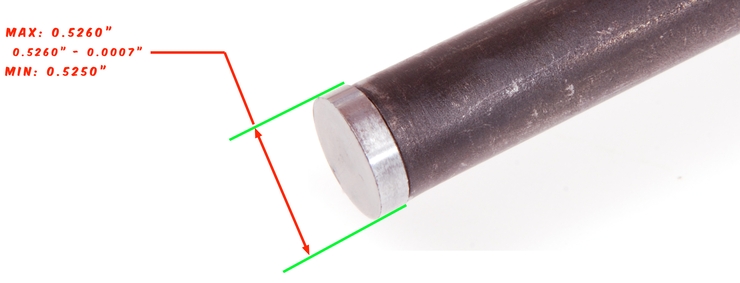
2 Over-sized Gas Cylinder:
The gas cylinder on your M1 Garand is a consumable item. When the gas piston moves back and forth in the gas cylinder the diameter of the gas cylinder will slowly increase from wear. As the gas cylinder increases in diameter, more pressure is lost during the gas cycle. To properly measure the inside of the gas cylinder a gage is required. The most accurate and economical method is to use two gage pins. Go to the Inspection your M1 Garand article and read the Gas system inspection section for instructions on how to determine the state of wear on your gas cylinder.
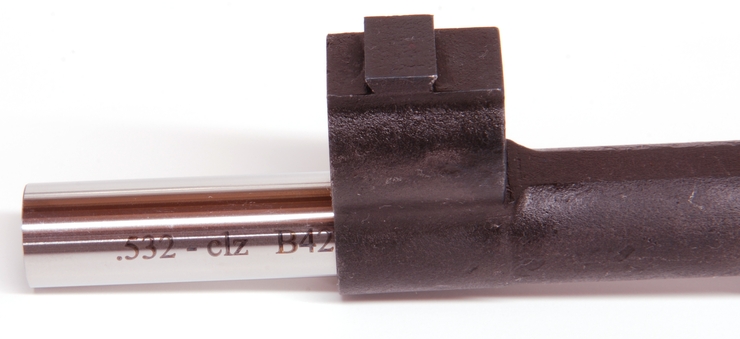
3 Undersized Barrel at Spline Section:
The outside diameter of the barrel at the bearing surface for the gas cylinder must not be reduced. If reduced, leakage of gas between the barrel and the gas cylinder greatly reduces the power available to operate the weapon. This failure can promote short recoil stoppages. This type of failure is likely from a manufacturing defect. This type of failure would have been addressed when your M1 Rifle was put into service and is very unlikely to be seen today.

4 Carbon or Foreign Matter in the Gas Passage:
The gas passageis a hole drilled in the barrel as shown below. The gas passages function is to allow gas to flow into the gas cylinder; facilitating the cycling of the rifle. The dimension of this hole is important and should be checked prior to use. If the hole is plugged with carbon fouling then insufficient gas flow can lead to short stroking of the rifle. If the hole is too large, excessive pressures can develop causing damage to the op-rod or receiver heel.
An easy way to inspect the gas passage is to purchase two numbered drill bits from your local hardware store. You want to purchase a #47 and a #46 drill bits. These will become our GO and NO-GO gages respectively.
The #47 drill bit should fit into the gas passage. If the gas passage is plugged with fouling gently spin the drill bit with your fingers as you clean the passage . DO NOT USE A POWER TOOL. After the passage is clean, take the #46 drill bit and using the smooth end (not the drill end) verify that the drill bit will not fit into the gas passage.

5 Carbon in the Gas Cylinder:
If too many accumulated deposits of carbon form in the gas cylinder, the rifle may short stroke. Remove the lock screw and remove the carbon with a soft brass screwdriver blade or a similar instrument. The gas cylinder lock may be removed and the screw reinserted in the gas cylinder. thread the screw in far enough to break loose the carbon. Exercise care not to cross the threads. The inside of the gas cylinder is to be thoroughly wiped clean and oiled. A few drops of oil placed between the rear gas cylinder lug and the operating rod, with the muzzle tipped down, will be sufficient. Manually actuate the operating rod through a few cycles to distribute the oil properly.
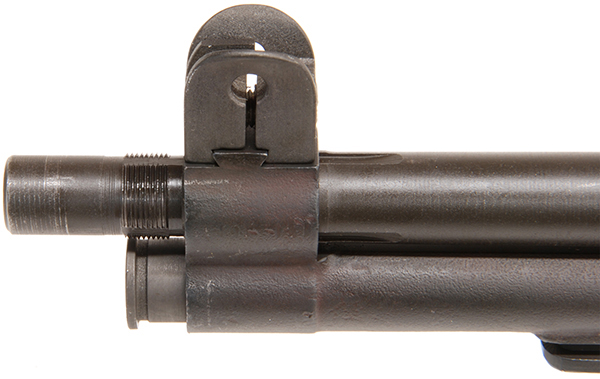
6 Operating Rod Binding:
If the Operating Rod is binding then the force needed to cycle the rifle is lost in overcoming the binding. Inspect for binding between the barrel, receiver group, and the operating rod by installing the rod and bolt in the rifle. As the rifle is tipped up and down, the rod and bolt should be moved from closed to open position and back by their own weight. If there is binding, inspect the tube for dents and the handle for deformation, which will cause binding of the underside of the lug on the cut in the receiver.
It’s very common for new stocks to have some binding issues. These stocks are never drop in and require some fitting.

7 Valve Leak in the Gas Cylinder Lock Screw :
Insert a small rod in the screwdriver end of the gas cylinder lock screw and raise the valve from its seat. Inspect for burs and foreign matter. If leaking gas is allowed to escape through the valve and will dissipate the force necessary to drive the operating rod to the rear. This can cause a short recoil malfunction. Inspect the function of the valve spring to see that it closes the valve tightly in its seat. Replace all gas cylinder lock screws which have burs on the valve face or seat, or where the spring tension is insufficient to seat the valve tightly.
The gas screw can become loose during firing if it isn’t torqued to at least 10 ft-lbs. A 1/4″ socket extension can be used to help tighten the gas cylinder lock screw. Always use a gas cylinder wrench when tightening. Supporting the gas cylinder prevents the torque from being transferred to the barrel splines.
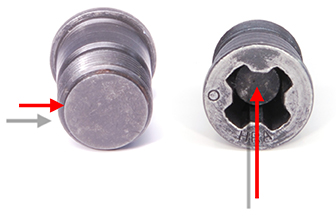
8 Defective Operating Rod Spring:
The operating rod spring is probably the single most critical component to the proper cycling of your M1 Rifle. The op-rod spring connects to the follower rod and slides inside the op-rod tube. This spring provides the force required to properly cycle the rifle. Many M1’s are shipped with springs that have seen significant service and need to be replaced. Your first purchase for parts should always include a new op-rod spring.
It is hard to determine if an op-rod spring is still serviceable. Measuring spring length alone doesn’t tell us if the spring constant has changed in the past decades of service. You can purchase new replacement springs cheaply and should do so when putting an M1 rifle back into service or diagnosing malfunctions. Remember to grease the op-rod spring when re-installing.
A 5-pound weight should compress the spring to 17.75 – 1″
A 16-pound weight should compress the spring to 12.75 – 1″
Worn out or broken Operating Rod Springs are the #1 cause of malfunctions in the M1 Garand. If you need to replace your spring you can purchase a new one here : [Operating Rod Springs]

9 Bolt Binding:
With the Follower rod and Operating Rod removed from the rifle, operate the bolt back and forth several times by hand and note where it is binding. The rear lug on the bolt dragging on the receiver and burred locking lugs are the two most common causes of a binding bolt. Remove the bolt from the receiver. Using a fine flat file or fine-grained sharpening stone remove just enough metal so that when the rifle is tipped up and down, the operating rod and bolt will move from closed to open position and back by their own weight. If you don’t have the experience or the proper tools to do this correctly, have your local gunsmith perform this task. This is a very uncommon failure to see with surplus M1 Garands today.

10 Improper Lubrication:
The M1 rifle is designed to operate with its sliding components greased. Proper lubrication is important for the correct operation of the rifle. As a general rule, areas that show wear on the parkerizing from two moving parts are lubricated. Be sure to read the lubricating your M1 Garand Article. This is a common reason for malfunctions in the M1 Garand.

